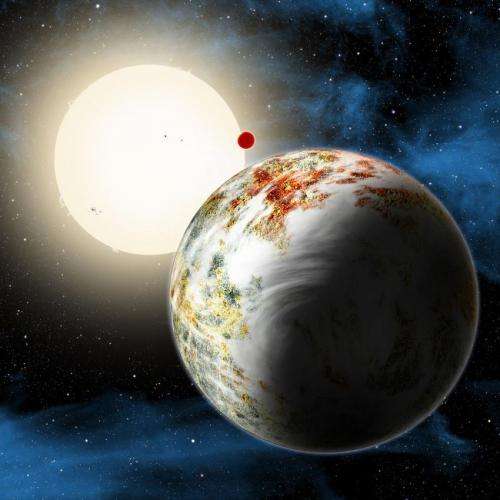June 9, 2014 report
Best of Last Week – New type of planet found, workload sharing robot limbs and clues about where all the antimatter went

(Phys.org) —It's been a busy week for space scientists—a team of astronomers discovered the first Thorne-Zytkow object—it's a weird type of hybrid between a red supergiant and a neutron star that looks like a regular red supergiant, except it has a different type of chemical signature, giving it away. Another team of astronomers found a new type of planet: The 'mega-Earth'. It's rocky and weighs 17 times as much as our own planet. And yet another team has found that surprisingly strong magnetic fields challenge black holes' pull. Black holes surveyed had magnetic strength equal to their gravitational pull, the first such direct evidence of it. In related news, theories suggest there should be equal amounts of antimatter and matter in the universe, yet we're not able to detect any unless we create it ourselves. Now a CERN experiment takes us one step closer to discovering where all the antimatter went.
Also, graphene has been in the news an awful lot lately, due to its many interesting properties, yet because of its two-dimensional nature, it's been limited in some respects. Now, however, scientists have found stronger 3-D material that behaves like graphene, making it easier to create the devices that were supposed to be based on graphene. In another groundbreaking effort, researchers have developed a new way to make laser-like beams using 250x less power—it's fueled by electricity instead of light. Also groundbreaking was a report that a new therapy wiped out cervical cancer in two women. Two out of nine patients underwent complete remission. That's very good news.
In news on another front, scientists may have found a cure for laziness, as MIT lab designs workload-sharing robotic limbs. Why do heavy lifting all by yourself when you could strap a robot on your back and have it do all the work for you? It may be the wave of the future.
And finally, for those people feeling squeamish about dying, comes word from researchers in Boston as Harvard confirms antique book is bound in human skin—they believe the skin came from a woman who went insane and died from a heart attack back in the 19th century. For those looking to avoid a similar fate, by not dying at all, one team of researchers has found the anti-diabetic drug metformin slows aging and lengthens lifespan—at least in roundworms. We'll still have to wait to see if it might work for us humans, of course, but at least it gives us something to hold onto for now.
© 2014 Phys.org




















